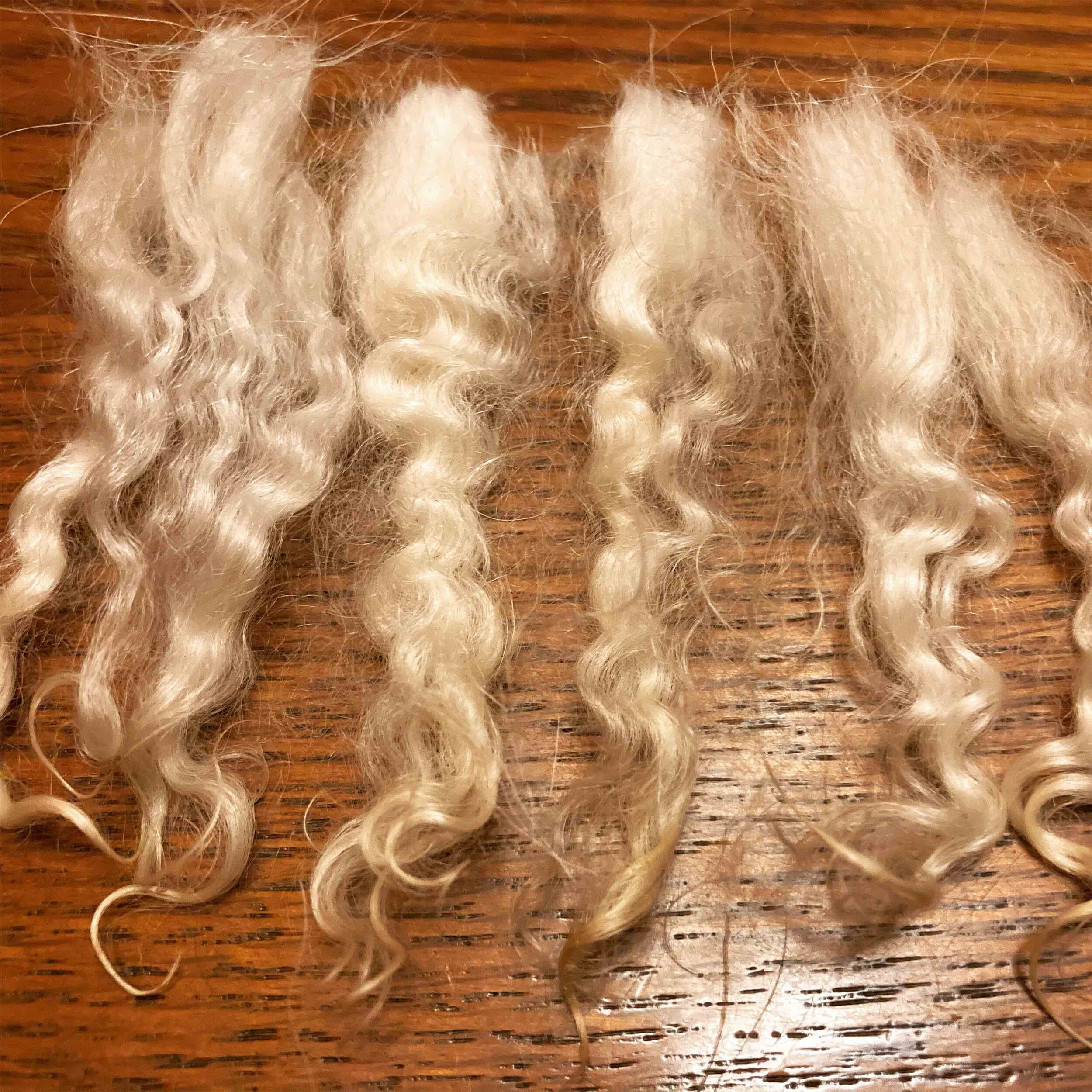Raising Pygora Goats: Chapter 3, Fleece 101
Years ago when I took up knitting I was drawn to natural fibers for their warmth and durability. Finer wools, alpaca, and cashmere were my favorite, with the last being the ultimate luxury. But cashmere yarn was not only pricey, it was also almost impossible to find. I remember asking the owner of the knit shop where I often spent Saturdays what breed of sheep produced cashmere. She held back a laugh and told me: “Robin, cashmere comes from goats.” I was floored. The only goats I had ever known were meat goats or dairy goats. I truly had no idea there were fiber goat breeds.
I decided right then and there I wanted to raise cashmere goats. Of course, I lived on a postage stamp in the city with a back yard that could be mowed with a pair of scissors. It would be more than a decade before my husband and I found a way to move back to a rural area and start our goat farm. In the meantime, I had learned more about cashmere and discovered that several goat breeds produce cashmere down. I had also learned about angora goats, which produce mohair. (Angora fiber comes from rabbits.) When I began looking in my area for breeders, I stumbled on a farm that raised Pygora goats. Pygoras are a cross between the angora and the pygmy goat, which is one of the breeds that produces cashmere. The cross results in a goat that essentially produces a mohair-cashmere blend. Some Pygoras’ fleece leans more toward mohair with its curl and bloom. Others lean more toward cashmere with shorter, finer fiber.
When registered, Pygora goats are typed and their fiber named either A, B or C. For the best description of each, check out the Pygora Breeders Association website. After five years raising Pygoras, here are a few inside tips about fiber types and care:
In my experience, Type A fleece is easiest to maintain. I set out to find goats who leaned more toward Type C, but over the years I have discovered that finer fiber mattes more easily. Also, my goats with the finest fiber seem more prone to flaky skin in rainy seasons, which can damage their fleece. If I can keep their fleece in good shape, it is amazing and worth it!
Fleece will change as the goat ages. A goat can be typed anytime before a year old, and I have learned to wait as long as possible. I have had kids that typed as B but later in life were clearly C type fleece. Most of my goats are typed as B fleece, but they have a wide range of characteristics. Their fleece can also change color over time.
Whether or not to wash your goats is a hotly debated topic in the Pygora world as washing the fleece can impact its natural characteristics. In wet seasons, I find that if I wash my goats about a month prior to sheering and work to keep them as dry as possible after their bath, I get the best possible fleece. It is necessary to blow dry your goats with a show blower or leaf blower after bathing, so it is time consuming.
Pygoras are typically sheered twice a year, and I strive to schedule my sheerings in March/April and September/October. Our coldest months are January and February, so sheering by October 15 ensures they have fleece coverage in time for cold temperatures. However, I’ve learned that the easiest way to loose a fleece is to wait for a perfect time. When fleece starts to matte, it’s time to sheer if at all possible.
If all this sounds overwhelming, don’t worry. If you are considering adding Pygora goats to your farm, know that if you buy kids from Caney Fork Pygoras we will always take your call, answer your questions, and offer any help we can as you work to produce the best possible fleeces. In the end, with a little bit of care, you will have rare, incredibly soft, gorgeous natural fleece to spin or sell.
Stay tuned for Chapter 4. I’ll give you some basics about preventative vet care for Pygoras.



